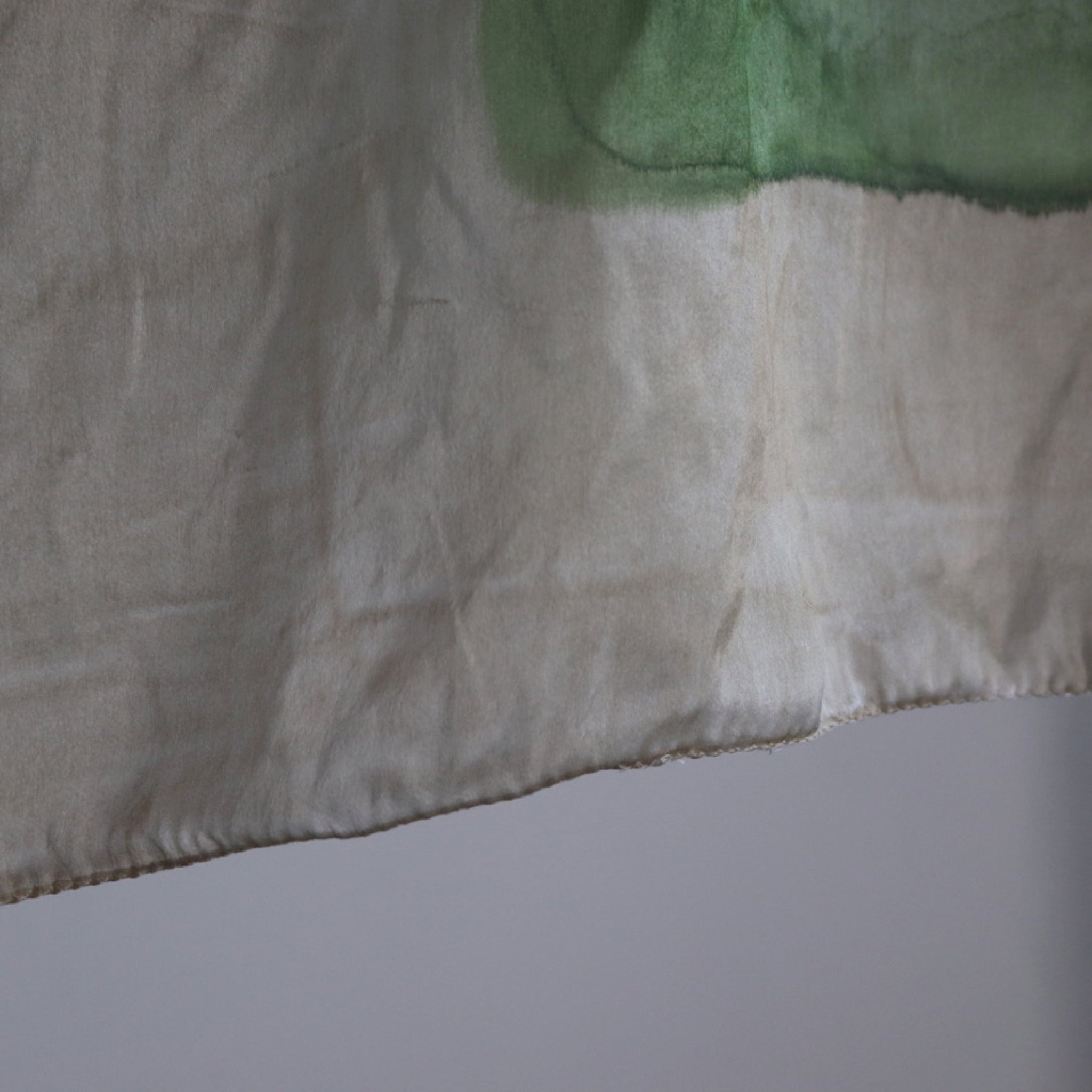Today, I would like to introduce SILVANA MANETTI.
More than 20 years ago, it was established as a "fabric research and development center" in Italy.
Until now, SILVANA MANETTI has developed and provided unique fabrics for big name brands around the world.
About a year and a half ago, during the fall/winter season, we announced scarves and blankets as a brand that made the most of the fabric itself.
I was astonished by the world's fabrics that I had never seen in other brands, even if I searched all over the world, so I have been introducing them to everyone at our shop since the debut.
SILVANA MANETTI started as a brand in autumn and winter due to the characteristics of stoles and blankets.
We presented two autumn/winter collections, and for the first time, we created a "spring/summer" collection.
And for this first spring/summer season, I've created something I've never encountered before.
That's what this collection is about.
Well, we have handled quite a few variations in the autumn/winter season, and there are various lineups as brand collections, but there aren't many types in terms of spring/summer.
However, each one of them is very rich.
Let me introduce you to that collection.

SILVANA MANETTI
ANTONIETTA 800
material_SILK 100%
color_CYANOTYPE
size_140cm×130cm
this.
"CYANOTYPE"
Cyanotype, or a scarf using a technique called cyanotype.

The base material is 100% silk.
Strictly speaking, silk organza.
Then, the pattern is put on the scarf using the technique of "Isn't it possible?"
That method is "CYANOTYPE".
This is an application of the old photographic printing technology.

"Blueprint".
This "blueprint" is a method in which the solution is exposed to ultraviolet rays such as sunlight to cause a chemical reaction, leaving the design white and the surroundings appearing blue.
This is a photographic printing technology invented in England in 1842.
It seems that photography was invented in 1839.
So when you think about it, it seems to be a time-honored method that has existed in the photography world since the beginning.
However, in photography, this technique gradually fell out of use with the development of copiers in the 1950s.
At SILVANA MANETTI, we brought this technique into the world with the "silk scarf".
I think this is a no-brainer.

I think you'll understand when you see it, but it has a distinctive pattern.
It's a race.
antique lace.
This is made by putting antique lace on white silk organdy and soaking it in solvent.
Then, just like the original blueprint, it was exposed to UV light and only the areas of the silk that were not laced turned blue.
The part that looks whitish is where the antique lace was on.
The border between the white part and the blue part is a little vague because the solvent and ultraviolet rays react to make the lace pattern stand out.
The outline of the antique lace is vaguely showing up.

Since it is called silk organdy, the fabric itself is so transparent that you can see through your hands.
However, when it's actually wrapped around the neck, the rectangular fabric is put together to some extent, so it doesn't feel like it's transparent.
Also, when it actually fits on the neck, I think it will be the best balance.

The edges of the fabric are cut off.

The base silk organza looks very beautiful, but the detailed antique lace pattern and unique "blue color" are added to it.
A scarf that transcends eras and concepts and has an extraordinary atmosphere no matter who sees it.
Without a doubt, there is a world waiting for you that can only be found here.
I think there are many ways to use it, but in this photo, just fold it into a triangle, roll it up, and tie it around your neck. Or just roll it up.

It also has a very distinctive blue coloration.
Once you put it on, it's hard to tell what the lace pattern is.
The base fabric is the base fabric, so there is no complaint about the neck area.
And one more thing.


SILVANA MANETTI
CONTEMPORANE 1950
material_SILK 100%
color_ONE
size_130cm×130cm
this.
This is hand-painted by the brand from the beginning.
Originally, in the fall and winter season, the brand uses materials such as wool and cashmere, as well as yak and camel, as they are, using the original manual felting technique.
Some of them were even hand-painted on top of the "fiber clumps".
This time, since it is spring and summer, the base is also silk.

There is a feeling of being transparent like the blueprint earlier.
However, this one is silk satin, not silk organdy.
That's why I feel like this scarf is thicker.




Hand-dyed and hand-painted scarf on multiple occasions.
The unevenness and shadows of the hand-dyed dyeing are strong.
Hand dyed in blue and green on beige dyed ground.
Then hand painted in black over it.

As for the processing of the edges of the fabric, all sides are hand-made here.
Because the size is quite large, it is all hand-sewn.

I think that the colors that are dyed in different ways overlap each other, and the color contrast of each one works wonderfully.
It's a bright hue, but it exists in the opposite realm of pop moods.

It's just as big as before.
This one is also folded into a triangle, and from there it is elongated.
There must be a way to look that you like the most, so I think it would be nice if you could try out what you like.
Take a look at the SILVANA MANETTI scarf.
